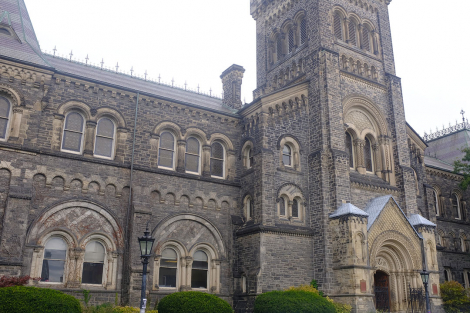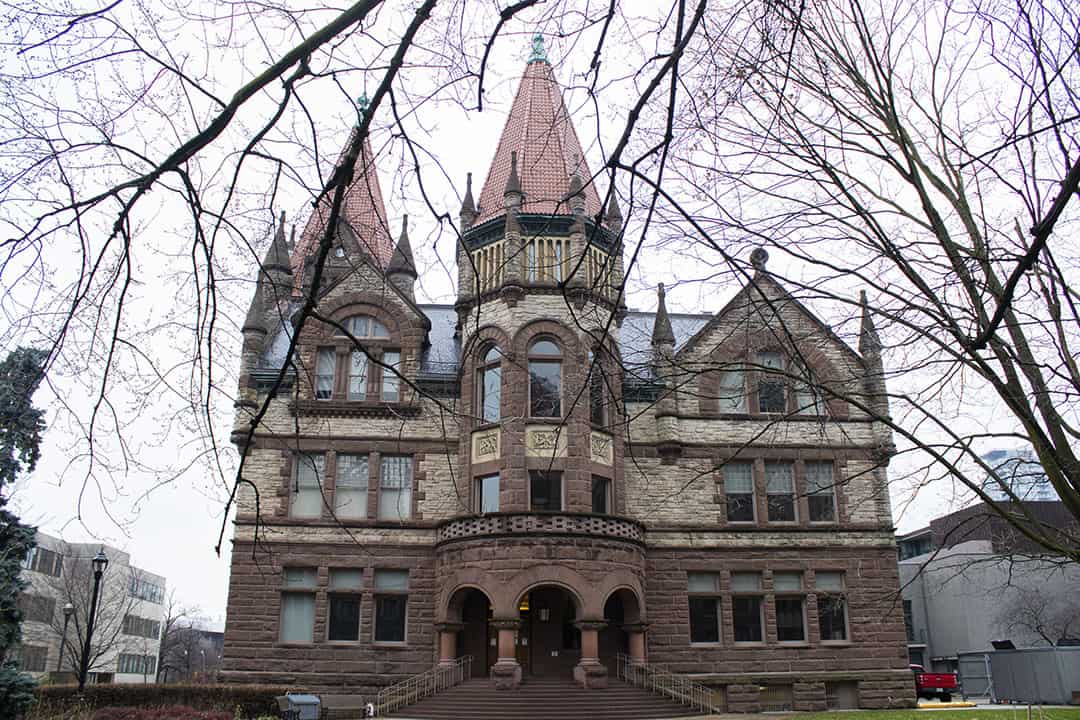When you’ve just been admitted to the University of Toronto, you may be wondering about the college you have been assigned to.
Have you been assigned to Victoria College? You’ll be greeted with a beautifully designed website and promises of an in-course scholarship of up to $1,000 if you do well in your courses. How about Trinity College? You’ll have much of the same experience: exclusive experiences for you as a Trinity student, funding for experiential learning, and so on.
Yet the narrative often changes if you’ve been assigned to constituent colleges like New College. In New’s case, you’ll be greeted with an outdated website and often confusing procedures, like the New College Registrar’s Office’s weakly explained refusal to answer emails sent on weekends during the summer term. I don’t know of any other institution, in or outside of the university, that’s done that before. It’s confusing for students, and it isn’t in their best interests.
There is an undeniable, visible, omnipresent inequality between all of the University of Toronto colleges. Even the students themselves have pointed out differences: one student recently complained on a popular U of T confessions page about “how disproportionate the services offered in different colleges are.” There are clear and fundamental differences in funding, merchandise, web services, and so much more.
The inequality appears more specifically between the constituent colleges — Woodsworth College, New College, University College (UC), and Innis College — and their federated counterparts — Victoria, St. Michael’s, and Trinity. While the fact that students at federated colleges pay larger incidental fees explains some of the funding differences between the colleges, it is U of T’s neglect of constituent colleges that primarily contributes to a lot of unequal student experiences. In fact, I’ll give you two everyday examples of U of T’s neglect of constituent colleges, and what that neglect means for students, both prospective and current.
Firstly, the U of T Bookstore does not sell college merchandise representing undergraduate constituent colleges, while Trinity, St. Michael’s, and Victoria — along with certain theological colleges like Emmanuel College and Wycliffe College — are visible on the shelves. Think about the newly admitted UC student who goes on the Bookstore website and sees Vic hoodies and Trinity pennants, but not a speck of recognition for their prospective college.
This may seem like a small “fact of life,” but it’s important, especially for incoming students — the college system is about organization, but it’s also about identity and inclusion in our community. Why are constituent colleges not being represented alongside federated colleges? Are students in those colleges unworthy of this representation, or are they worth less?

Colleges may present unequal opportunities for students. LOVISA HANSEN TIBERG/THE VARSITY
There are also differences in the attention put into the college websites. New College’s website is plain horrible: it’s outdated, hard to navigate, and obviously neglected, and the ‘upcoming events’ tab is not functional. Although not as neglected, Innis College’s website is similarly outdated and off-putting, sporting a grainy logo and a copyright year of 2014.
Weirdly enough, Woodsworth College seems to not even use a unique website, opting for a generic U of T website instead that doesn’t even contain the logo of the college itself. University College’s website, while professional, simply copies the university’s website design.
The colleges don’t use a set template, making web services confusing for students with no consistency between college webpages. Students depend on the university and its colleges to work for them, and the university needs to create a visually cohesive web services system to equalize the branding and student experience.
It’s unclear to me why the university isn’t paying attention to their own branding and public presence, and it’s embarrassing to see. After all, if each college reflects on U of T, you wouldn’t want even one of them to fall short of U of T’s standards. Yet, the sad truth is colleges are falling short not only of the standards we know U of T for, but of the expectations of their own students.
The inequality between colleges does not even end with federated and constituent ones: we often overlook the theological colleges like Emmanuel College, Knox College, and Regis College. They are an integral part of the university, and deserve a larger focus — and the opportunity to open up to undergraduate students. At Oxford University, after which U of T is modelled, certain theological colleges allow undergraduate students to attend and be part of their communities. For students who can find theological colleges that align with their faith, there should be opportunities to join those colleges, even if just as an associate member.
U of T has big problems to solve here. The university has been neglecting the constituent colleges, and students at those colleges are paying for it. A good student experience means active inclusion and equality of opportunity; U of T needs to start standardizing and equalizing the college experiences for all students. We are all students of the University of Toronto — regardless of our college affiliation — and the university needs to start acting like it.
Logan Liut is a first-year social sciences student at University College.


